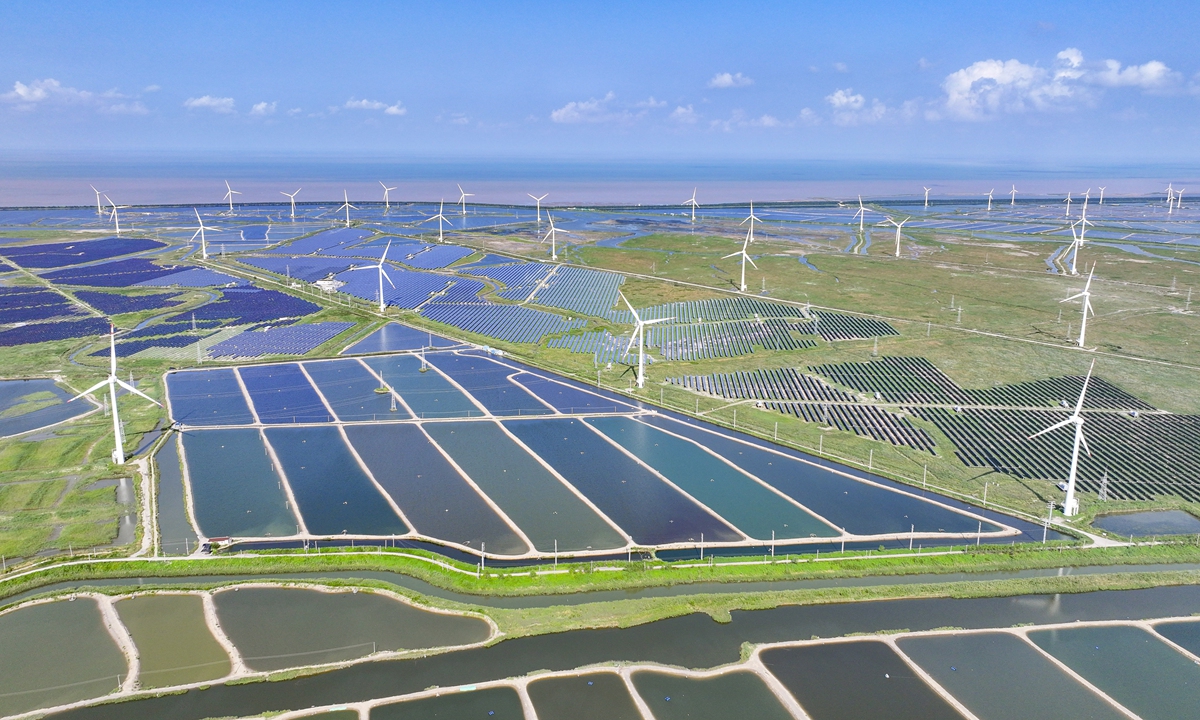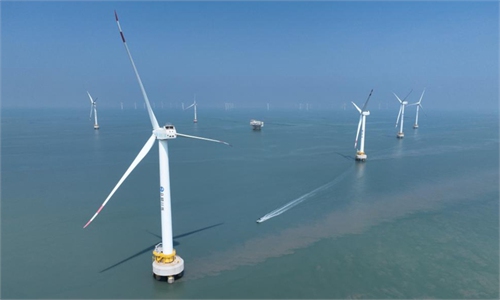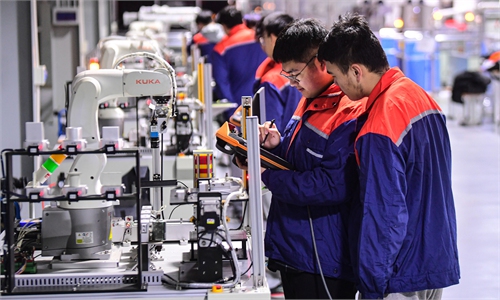China issues guidelines to speed up renewable energy use
Move will promote construction of new infrastructure: expert

Wind turbines and photovoltaic panels in Yancheng, East China's Jiangsu Province deliver reliable green energy on August 15, 2024. According to data from the National Energy Administration, as of July, China's installed renewable energy power generation capacity reached 1.65 billion kilowatts, up 25 percent year-on-year. Photo: VCG
China on Wednesday issued guidelines to promote the replacement of traditional fossil energy sources with renewable energy, with a focus on integrating the use of renewable energy in key fields and advancing relevant innovative technologies to cultivate new models for the replacement.
The guidelines set a domestic consumption goal for renewable energy to exceed 1.1 billion metric tons of standard coal by 2025, and to exceed 1.5 billion metric tons of standard coal by 2030, to strongly support the target of peaking carbon emissions by 2030.
The 17-point guidelines, which were jointly issued by six departments, including the National Development and Reform Commission, cover a wide range of aspects including elevating the security and reliability of renewable energy replacement, accelerating the replacement in key fields such as industry and transportation, and actively launching innovative trials and enhancing guarantees.
Lin Boqiang, director of the China Center for Energy Economics Research at Xiamen University, expressed confidence in the country's ability to meet the targets, noting that the guidelines will promote the development of new infrastructure that matches the use of renewable energy.
The guidelines propose to accelerate the construction of supporting infrastructure for renewable energy, including speeding up the construction of digitalized and intelligent power grids, and strengthening the construction and upgrading of infrastructure such as networks for heat, gas and hydrogen supply.
The guidelines also call for the coordination of the development and utilization of new infrastructure and renewable energy, with measures including enhancing the construction of charging infrastructure, gas filling stations and hydrogen refueling stations, and promoting the deep integration and development of artificial intelligence, the Internet of Things and blockchain with renewable energy.
The measures focus on stepping up the construction of new infrastructure while advancing the development of corresponding technologies, in order to better utilize the domestic capacity of renewable energy, Lin told the Global Times on Wednesday.
China has been stepping up efforts to bolster green development. In August, the Communist Party of China Central Committee and the State Council unveiled guidelines to ramp up the green transition in all areas of economic and social development.
The main objectives are that by 2030, China will achieve "remarkable results" in the green transition in all areas of economic and social development, and that by 2035, a green, low-carbon and circular development economic system will be basically established and the goal of Beautiful China will be basically achieved, the Xinhua News Agency reported.



